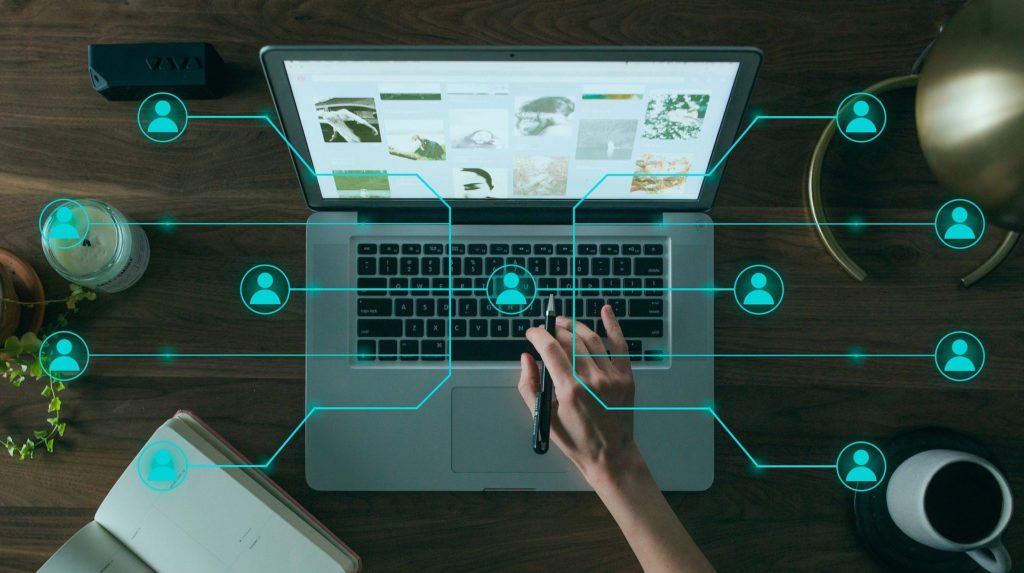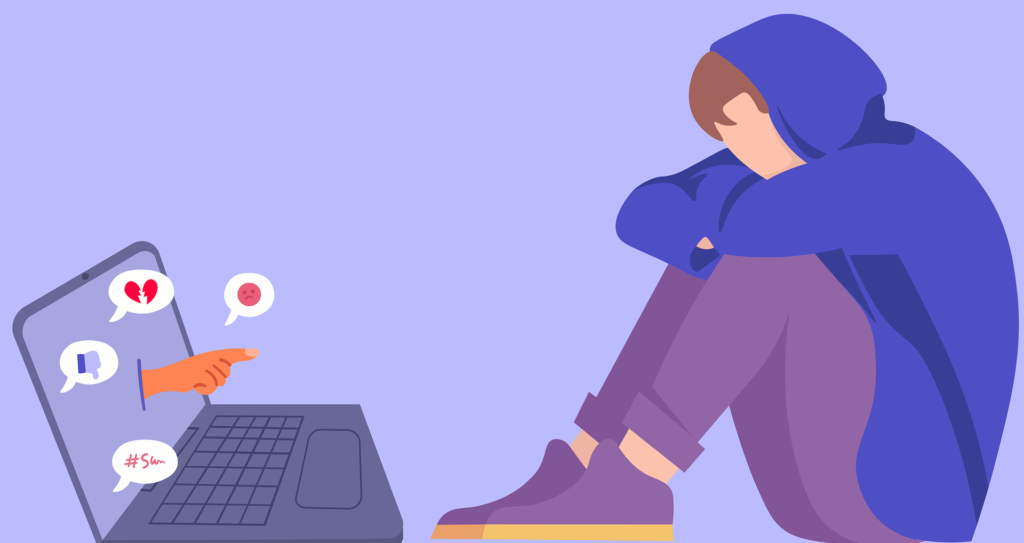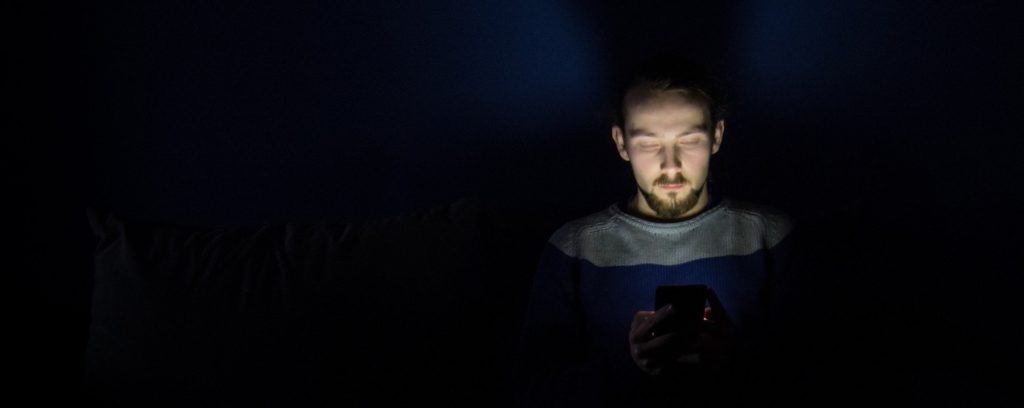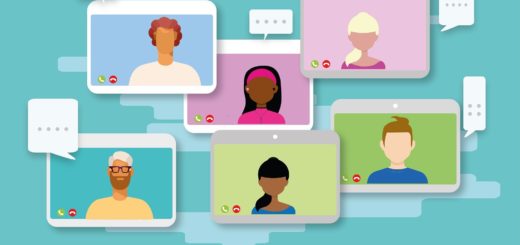Problematic Social Media Use – Part 2: Challenges & Solutions
Although social media is generally used to establish and maintain social connections which is a natural and healthy human behavior, various problems have been associated with certain kinds of social media use. As with any behavior, its consequences can be positive or negative, depending on how it is done, with what intention, frequency, investment, etc. Social media can be positive if used to nurture healthy and positive relationships, to connect with support systems, to be inspired by others, etc. Or it can be negative, if used irresponsibly, carelessly, with negative intentions, untruthfully, excessively, to compensate for other aspects of one’s life that are missing, etc. Pathologizing all of social media use as bad or addictive does not help us because social media is a part of life that is unlikely to go away and one that is often harmless or even helpful. However, we must understand what problems can arise from social media use so that we can prevent them and/or treat them effectively when the occur. In this blog post I will discuss some of the most common problems and challenges associated with social media use and offer ideas for addressing them.

Numerous studies have found social media use to be associated with depression (Appel et al., 2016; Brailovskaia et al., 2019; Lin et al., 2016) and anxiety (Panova and Carbonell, 2019; Lee-Won et al. 2015; Shaw et al., 2015) although little is known about causality (what came first, the chicken or the egg?). Some suggest that social media causes or worsens these disorders whereas others suggest that users with these disorders use social media more because it helps alleviate their symptoms. Both are probably true. People who are already depressed or anxious may be on social media more as a coping mechanism – reaching out to support systems, sharing their pain with those in similar situations, researching treatments, etc. (Dodemaide et al., 2019). Additionally, people may engage in certain patterns of social media behavior (discussed in Part 1) or face certain challenges on social media that may cause them stress and trigger or exacerbate these disorders. Fox and Moreland (2015) found five such challenges related to negative Facebook experiences which apply to other social networks as well and may mediate the relationship between social media use and negative consequences such as anxiety, low self-esteem, stress, and depression.
These challenges are:
1. Managing inappropriate or annoying content
2. Being tethered
3. Lack of privacy and control
4. Social comparison and jealousy
5. Relationship tension and conflict
Cyberbullying has also emerged as a serious problem that can lead to anxiety and depression.
Let’s break each of these challenges down.
The Social Media Challenges
- Managing inappropriate or annoying content: This challenge relates to the experience of seeing displeasing, uncomfortable or irritating things on the social network that you cannot control. For example, people can post overly intimate or troubling posts, you can see shocking news, unsolicited ads, etc. Having to navigate through content that you do not want to see or that puts you ill at ease can become burdensome and stressful.
- Being tethered: This point relates to feeling obliged to respond or interact to outreach from people in your social network. In the past, if you didn’t pick up the phone when someone called you, you could use the excuse that you weren’t home (even if you were) because phone were stationary. Nowadays, this excuse is not possible; since social media is accessed by a click on our smartphones which are always in our pockets, there is no real excuse for why you didn’t pick up the phone or respond to a text or comment on a selfie or see some important update on Facebook, etc. Everybody knows that you can be instantly reached and so people often expect prompt responses. This creates a social pressure to be always available and engaged with what is happening in the social stream, even when you don’t want to be, thus creating a sense of obligation, stress and anxiety.
- Lack of privacy and control: Although you have more or less control over what you post online, you don’t have control over what others post of you or comment about you. If someone releases information/photos/videos about you that you did not want released, this can cause great stress. And often, there is little you can do to stop people from seeing it. Privacy concerns also arise because of how the information on social networks can often be easily found by people outside your circle. If you just Google your name, for example, you may be surprised to see the photos that come up – photos from Facebook or other social networks you thought were private and even photos of your friends and family because of how everything is connected and traceable on the Internet. Not knowing where your personal information is going and who is looking at it can cause great anxiety.

- Social comparison and jealousy: One of the biggest problems with social media is that it encourages and facilitates social comparison. When you are constantly looking at the faces, bodies and lives of others, it is natural to compare yourself to them. Often, this leads to dissatisfaction and can negatively affect self-esteem because what is online is the highlights of people’s lives, looks and achievements and it is a misrepresentative excerpt. The content people post online is highly edited and carefully selected, thus appearing much more glamorous than the reality. However, it is hard to keep that in mind as you’re scrolling, thus leading to a sense of unhappiness about the cards you have been dealt in relation to those of others, anxiety that you are not measuring up, and depression that your appearance/successes/life are worse than the average one of your peers, even if in reality that is not the case.
- Relationship tension and conflict: The final challenge found by Fox and Moreland was the tension that social media can introduce to relationships – friendly, familial and romantic. This tension can arise in various ways – perhaps a friend/relative posts something controversial online, leading to arguments in person, or perhaps you don’t want to “friend” someone because you secretly don’t like them, creating a conflict, or perhaps you don’t act as “in love” as your partner online, creating anxiety about the dynamics in the relationship. Additional stressors can be the one-dimensionality of online communication (only text without facial expressions, intonation, body language, real-time conversation, etc.) which often creates misunderstandings. Also, the anonymity, ease and privacy of communications can lead to secrets being kept from loved ones, such as love affairs and aspects of one’s identity. All of these situations create stress and discontent.

- Cyberbullying: Related to the topic of anonymity online, the final challenge often encountered on social media is the act of cyberbullying, trolling, etc. Since social media can easily be anonymous, it is easier than ever before to say cruel things, threaten people or emotionally harass somebody without accountability or punishment. This, again, creates great stress and is often at the root of anxiety, depression and suicidality.
Treatment approaches
Problematic social media use is often a side effect of a separate, primary disorder such as anxiety, ADHD, OCD, etc. or the problematic thoughts and behaviors characteristic of certain personality profiles like narcissistic, neurotic, perfectionist, etc. Therefore, in order to treat problematic social media use, the primary disorder must first be identified. When that disorder is successfully treated, the associated problematic social media use will also likely decrease.
For those who do not have a separate primary disorder but are simply dealing with the challenges of social media use discussed in this post, there are certain techniques suggested to help engage with social media in a healthier way.

Self-Help Interventions
There have been various self-help apps developed to aid social media user in managing their use better. These apps (Flipd, Offtime, Cold Turkey, etc.) allow the user to block certain networks or to set time limits for use. The apps usually require a secret code to change the settings so it is not easy to do it when one gets the urge. This option serves as an external control mechanism for people who find it challenging to practice self-control with regard to social media.
For those who prefer to develop their internal self-control, mindfulness is an important skill to have for healthier social media use (Charoensukmongkol, 2015). Mindfulness is a practice of being in the moment rather than reaching for distractions such as social media, and there are various tools such as books, courses, guided lessons, etc. that can help a person develop this skill. Mindfulness is also very helpful in handling emotional discomfort which can prevent the social network from becoming a tool for avoidance coping (Shonin, et al., 2014).
Therapeutic Interventions
Cognitive-Behavioral Therapy techniques have been used for Internet addiction (Young, 2007) and may be helpful for problematic social media use too. These techniques involve identifying and reconstructing dysfunctional thoughts and behaviors related to social networking. Better thought patterns and strategies are taught for dealing with emotional discomfort and emotional needs so that the social media user stops turning to the Internet for the satisfaction of these needs.
Motivational Interviewing has also been an effective treatment for behavioral addictions and can be a potential treatment for problematic social media use (Andreassen et al., 2015). The goal of motivational interviewing is to help the user see the negative effects of their behavior and develop a motivation for change by identifying the gap between their current and desired state.

Education
One of the main reasons why problems develop from social media use is because people, especially young people, simply do not know how social media use can be harmful. They see it is as innocent, normal, fun, casual, etc. and don’t understand that it can lead to serious consequences. Therefore, one of the most effective ways to prevent problematic social media use is to teach people about its risks (Carbonell and Panova, 2016). Young people should be taught in school how social media use can interact with existing primary disorders to create a downward cycle of worsened symptoms, how it can be a tool for cyberbullying or other harassment, how easily privacy can be breached and personal information misused, how the social-comparison triggered by social media use negatively affects mental health, how using it as a coping mechanism is ineffective in the long run and unhealthy, etc. Making users, especially from a young age, aware of the risks related to social media use will significantly increase the likelihood of more responsible and healthy use. As with every other disorder, prevention is a much better approach that treatment.
Like any tool, social media is a two-sided coin – it has its positive and its negatives. In order to maximize its benefits and minimize its disadvantages, we need to be aware of the risks and problems associated with using it. Being conscious of and careful about how you use social media will help you exert better control over that use and prevent negative consequences in the short and long term.




Recent Comments